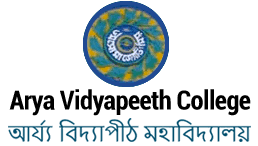Please use this identifier to cite or link to this item:
https://avcollege.digitallibrary.co.in/handle/123456789/101Full metadata record
| DC Field | Value | Language |
|---|---|---|
| dc.contributor.author | Bhattacharyya, Pradip Kumar | - |
| dc.contributor.author | Neog, Babul | - |
| dc.contributor.author | Sinha, Sourab | - |
| dc.date.accessioned | 2021-10-13T07:43:00Z | - |
| dc.date.available | 2021-10-13T07:43:00Z | - |
| dc.date.issued | 2013-06-02 | - |
| dc.identifier.uri | http://avcollege.digitallibrary.co.in/handle/123456789/101 | - |
| dc.description.abstract | Reactivity of aziridinium ion and mono- as well as cross-linked adducts formed during alkylation of DNA (GC base pair) by nitrogen mustards were analysed, using density functional theory (DFT). DFT based glo bal- and local reactivity descriptors were used to compare reactivity of the aziridinium ion intermediates and mono-adducts. Our results witnessed the inability of global reactivity parameters to explain higher reactivity of mustine. Out of the chosen set of seven drug molecules, propensity of cross-linked adduct formation by uracil mustard was observed to be highest compared to other family members. Electrophilic Fukui function was found to be useful in explaining the local reactivity pattern. Gibbs free energy of sol vation for the second aziridinium ions were observed to be higher compared to that of the first aziridi nium ions. | en_US |
| dc.language.iso | en | en_US |
| dc.publisher | Arya Vidyapeeth College | en_US |
| dc.subject | Chemistry | en_US |
| dc.title | Alkylation of DNA by nitrogen mustards: A DFT study | en_US |
| dc.type | Article | en_US |
| Appears in Collections: | Research Journals | |
Files in This Item:
| File | Description | Size | Format | |
|---|---|---|---|---|
| 2013 A.pdf | Page [19-25] | 458.04 kB | Adobe PDF |  View/Open |
Items in DSpace are protected by copyright, with all rights reserved, unless otherwise indicated.
